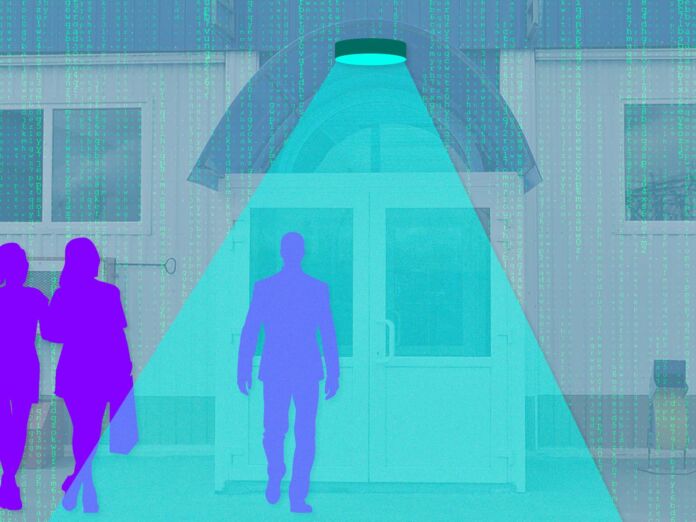
Millimeter wave radar sensors have evolved as cutting-edge technology that is transforming various industries by providing precise and dependable sensing capabilities. We will discuss millimeter wave radar sensors, highlight their recent advancements, and explore their applications across multiple industrial sectors. From warehousing to healthcare, home use to security, millimeter wave radar sensors have proven to be transformative, providing valuable insights and enhancing efficiency in complex environments.
Millimeter Wave Radar Sensor
The millimeter wave radar sensor is an advanced sensing technology that operates on electromagnetic waves within the millimeter wavelength range. Typically, it falls under the category of Active Remote Sensing, meaning it actively emits and receives signals to detect and measure objects’ characteristics.
These sensors have sparked tremendous interest in the scientific and engineering communities. These sensors operate at high-frequency electromagnetic waves, typically above 30 GHz, and have been widely adopted in various industries due to their unique properties.
How It Works
Millimeter wave radar sensors operate on the principle of emitting and receiving millimeter-wave radio signals to detect and monitor objects, some specifically tailored for human body sensing and monitoring applications. Sensors emit short bursts of millimeter-wave signals, which travel through the environment until they encounter an object, such as a human body.
Upon interaction, the signals reflect toward the sensor. The sophisticated receiver then captures and analyzes these returning signals, extracting essential information like distance, velocity, direction, and even vital signs in the case of human body sensing.
The sensor’s unique millimeter-wave frequency range grants it superior accuracy and resolution, enabling precise detection of even the smallest movements and subtlest changes in the surrounding environment, making it a revolutionary and invaluable technology in professional and industrial settings.
Use Cases
Due to their remarkable performance and distinctive characteristics, millimeter wave radar sensors find a wide range of applications across numerous sectors.
Security
For security applications, these sensors offer unique advantages. They can be used for perimeter monitoring of sensitive areas, such as airports and industrial sites. These sensors’ ability to detect motion, even through walls and obstructions, provides an added layer of security against potential intruders. Moreover, integrating these sensors with existing security systems enhances overall situational awareness and response capabilities, enabling rapid and targeted responses to potential threats.
Healthcare and Elderly Care
In healthcare settings and elderly care facilities, millimeter wave radar sensors can play a crucial role in patient monitoring and safety. They can be integrated into hospital systems to monitor vital signs and people without the need for intrusive physical contact. This continuous and non-invasive monitoring provides healthcare professionals with real-time data, enabling early detection of any abnormalities or emergencies.
These sensors’ versatility is further shown in smart home applications, where they facilitate seamless automation by detecting human presence and enabling intelligent gesture capture and more. From security and healthcare to industrial automation and smart homes, millimeter wave radar sensors are an indispensable technology that transforms the way industries operate and ensure safety, efficiency, and data-driven decision-making.
Exploring the Advantages
- Precise Distance Measurement: These sensors provide precise distance measurements, making them ideal for applications where accuracy is crucial.
- Real-Time Monitoring: These sensors offer real-time detection and monitoring functions, enabling instant analysis and decision-making, which is crucial in applications like industrial safety, healthcare monitoring, and security surveillance.
- High Resolution: The short wavelengths of millimeter waves enable precise measurements, making them ideal for detecting human and small objects or subtle changes in the environment.
- Wide Field of View: Millimeter wave radar sensors can cover a broad area, providing comprehensive data for monitoring large spaces effectively.
Game-Changing Advancement
Millimeter wave radar sensors are a game-changing advancement in sensing and monitoring technologies. Their excellent precision, non-intrusive design, and real-time monitoring capabilities make them a must-have tool in a variety of sectors. The sensors’ impact on safety, efficiency, and data-driven decision-making is truly extraordinary, from healthcare to industrial automation, automotive, and security applications.
We may expect the millimeter wave radar sensor to further revolutionize human body sensing and monitoring as technology advances, contributing to a safer and more linked world. Accepting this disruptive technology offers up a plethora of possibilities, moving us toward a future where data-driven insights and precise sensing revolutionize the way we live and work.
- SEO Powered Content & PR Distribution. Get Amplified Today.
- PlatoData.Network Vertical Generative Ai. Empower Yourself. Access Here.
- PlatoAiStream. Web3 Intelligence. Knowledge Amplified. Access Here.
- PlatoESG. Automotive / EVs, Carbon, CleanTech, Energy, Environment, Solar, Waste Management. Access Here.
- BlockOffsets. Modernizing Environmental Offset Ownership. Access Here.
- Source: https://www.iotforall.com/millimeter-wave-radar-sensors-advancements-and-applications-in-modern-industries



